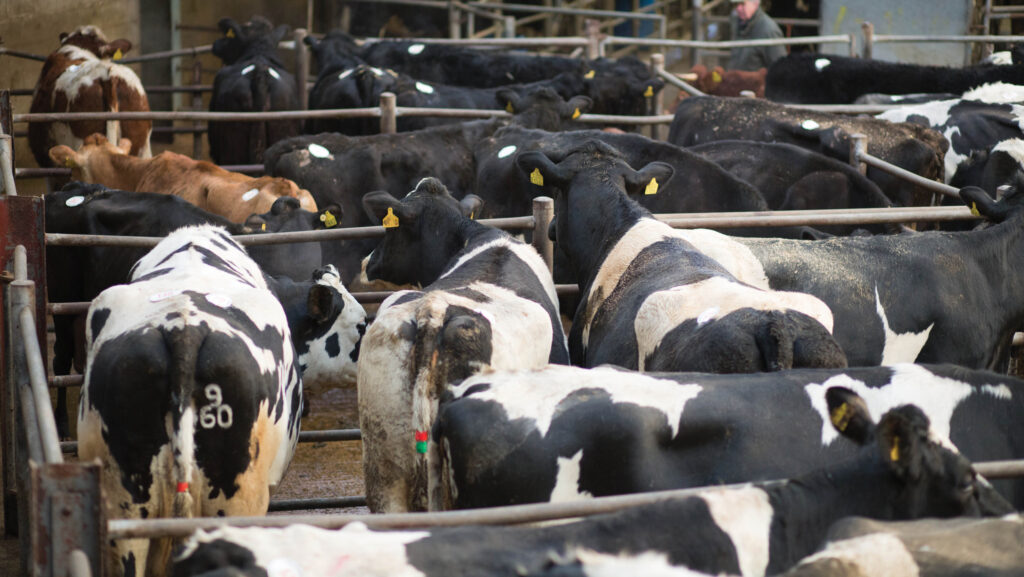Dairy sales tick-up as producers cull cows to cut costs
 © Tim Scrivener
© Tim Scrivener Cull cow numbers at auction marts and abattoirs have surged throughout the autumn, as both dairy and beef producers look to cash in while prices are firm.
Estimated weekly cull cow throughputs reached the highest levels of the year in early November, peaking at 12,600 head for the week ending 8 November.
Rapidly falling milk prices have prompted some dairy producers to cut costs and alleviate cashflow concerns by selling older cows.
See also: Scottish ag census reveals worrying fall in livestock numbers
Others are looking to weather the storm by strengthening their herds, replacing older cows with younger stock.
The GB deadweight cow average lifted to 525.1p/kg in the past week, up from 347.8p/kg this time last year.
Meanwhile, cull cows averaged 245.7p/kg liveweight at auction markets in England and Wales.
Cattle prices have been strong for much of 2025, although demand typically starts to shift at this time of year.
Orders of prime cuts for Christmas are largely fulfilled and focus tends to turn to cheaper mincing cuts, which may place some pressure on prices.
Increased supplies could also impact prices moving forward.
Trade at auction marts
Shrewsbury Auction Centre manager and auctioneer, Jonny Dymond, said:
“We’re seeing more barren cows and people swapping those barren cows for more highly productive milking cows in an effort to produce milk more efficiently.
“If producers are feeding a cow that is mid lactation and on a downward curve of a production cycle, she’s coming out as a barren early because they’re a good price.”
Mr Dymond said that money is then being rolled into younger stock, which means prices of fresh milking cows have not dropped anything like on the same level as the milk price.
“I don’t see that there’s going to be masses of cull cows because we have become very efficient in the dairy industry getting a lot of milk out of a cow and the reality is there aren’t actually that many cows left,” Mr Dymond said.
“There has been this huge exodus of cull cows from the beef industry and a high cull cow price now for probably two years, where cull cow prices have remained on a steady upwards spike,” he added.
He added that while the milk price drops have been announced, the actual loss of income will be felt in the next couple of months.
“That’s when the trade will be really tested,” Mr Dymond said.
Llyr Jones, auctioneer at Carmarthen Livestock Mart, said that even if milk prices were high, there would still be some cull cow sales at this time of year.
However, he said there have been a few more cows being sold as a result of falling milk prices.
He added: “A lot of farmers are getting October’s milk cheque through, which isn’t too bad.
“It’s probably six weeks to eight weeks down the line, that’s when I think that it will hit home for the dairy trade and the cows could be much less.”
Mr Jones noted that prices had already started to soften, with averages back on previous months and lower quality heifers and cows particularly under pressure.
The Numbers
- 12,600 Estimated weekly cull cow throughputs (w/e 8 November)
- 525.1p/kg GB deadweight average cow (w/e 15 November)
- 245.7p/kg Cull cows liveweight average at auction markets in England and Wales (w/e 15 November)
